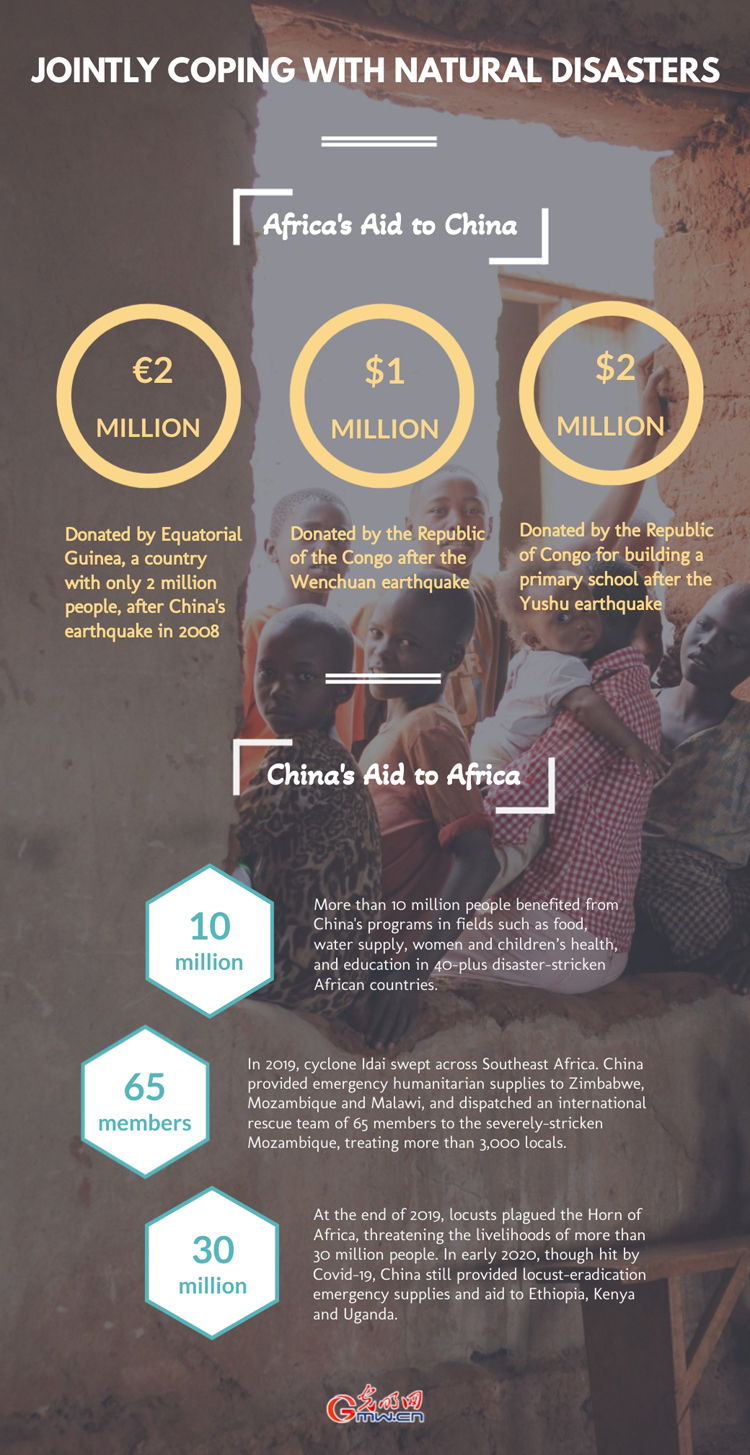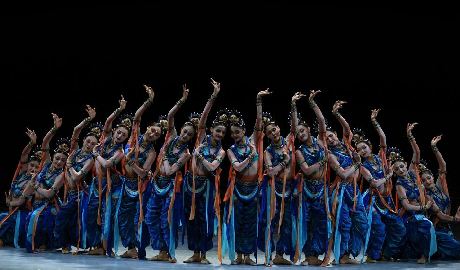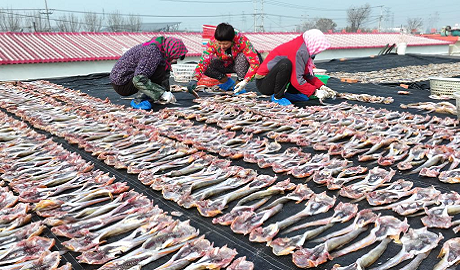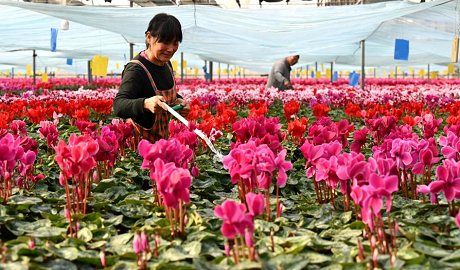


4. Jointly Coping with Natural Disasters
China has always attached importance to disaster relief in Africa, helping it to respond to various natural disasters and humanitarian crises, and providing emergency humanitarian assistance through multilateral organizations such as the UN, the World Food Programme, and the International Committee of the Red Cross.
Chinese people will not forget that in 2008 when China was struck by a devastating earthquake, Equatorial Guinea, a country with only 2 million people, donated 2 million euros, averaging 1 euro per person. The Republic of the Congo donated $1 million after the Wenchuan earthquake, and $2 million for building a primary school after the Yushu earthquake.
In return, China has carried out programs in fields such as food, water supply, women and children’s health, and education in 40-plus disaster-stricken African countries, benefiting more than 10 million people, and strongly boosting their economic recovery and social development.
In 2019, cyclone Idai swept across Southeast Africa. China provided emergency humanitarian supplies to Zimbabwe, Mozambique and Malawi, and dispatched an international rescue team of 65 members to the severely-stricken Mozambique, treating more than 3,000 locals.
At the end of 2019, locusts plagued the Horn of Africa, threatening the livelihoods of more than 30 million people. In early 2020, though hit by Covid-19, China still provided locust-eradication emergency supplies and aid to Ethiopia, Kenya and Uganda, and allocated funds from the China-FAO South-South Cooperation Trust Fund to assist the three countries to buy prevention and control supplies and carry on capacity building activities.

Artists of China National Opera House perform in dance drama "Qiuci" in Beijing


Fishermen dry seafood to supply market in Tangshan City, N China

In pics: flower plants of various kinds bloom at flower base in Hebei

Rongshui County strengthens ethnic culture with cultural resources in S China's Guangxi
点击右上角![]() 微信好友
微信好友
 朋友圈
朋友圈

请使用浏览器分享功能进行分享
